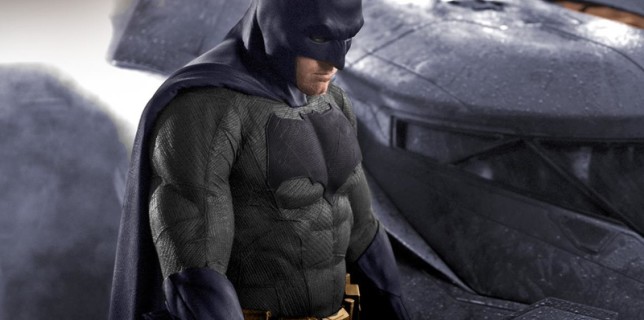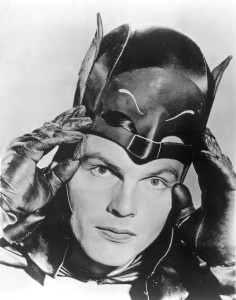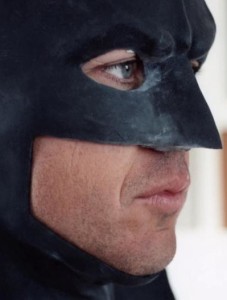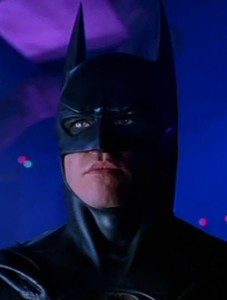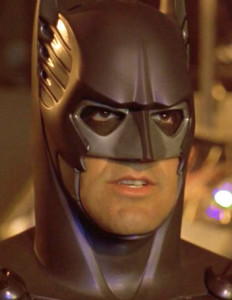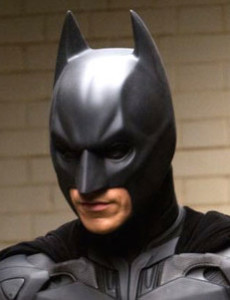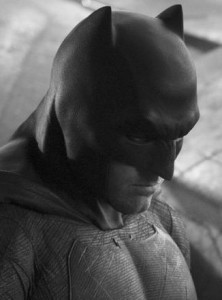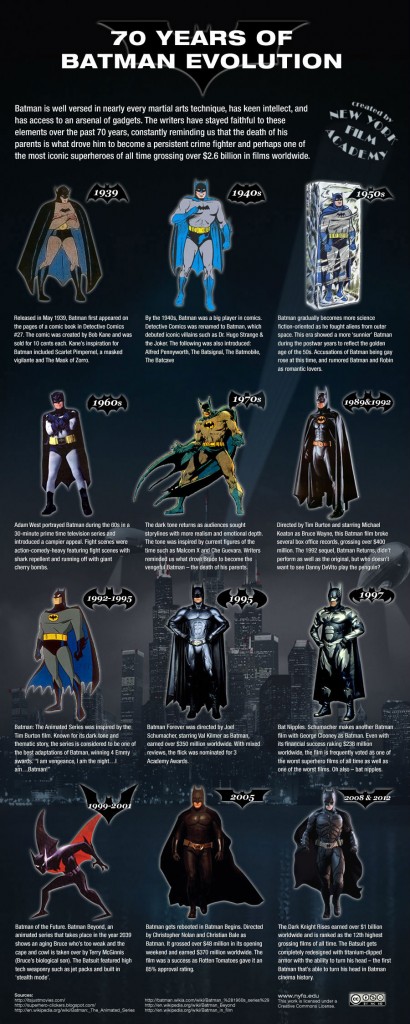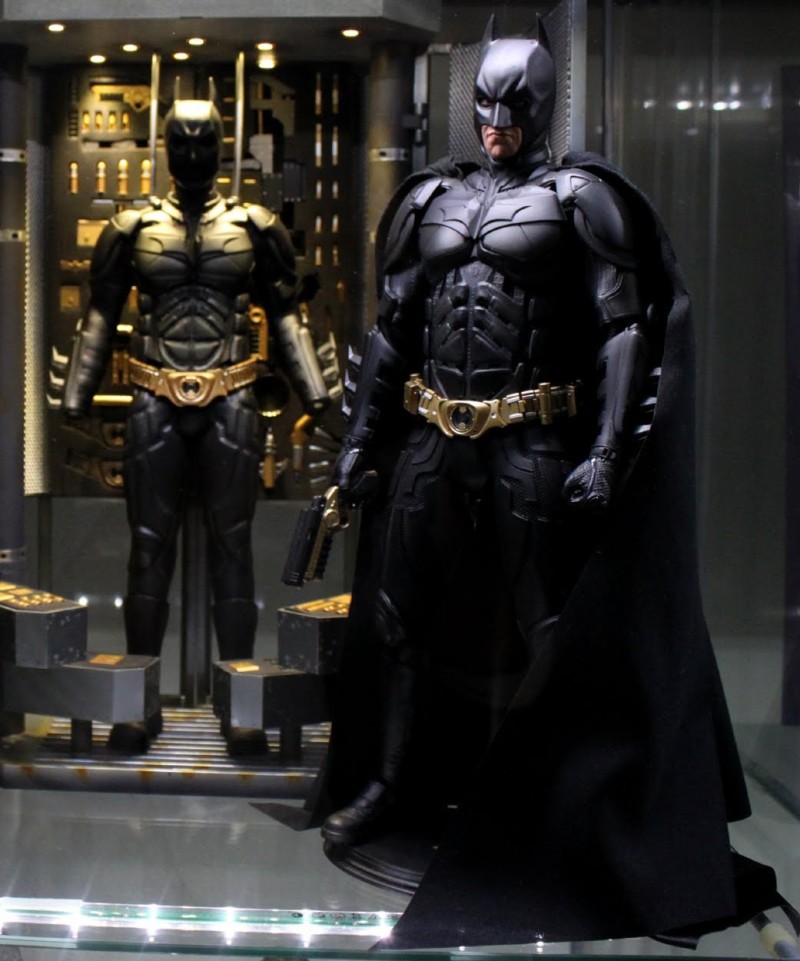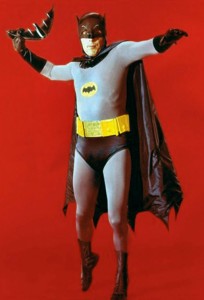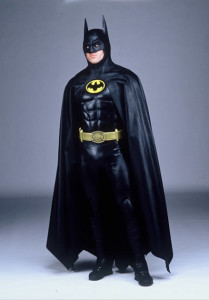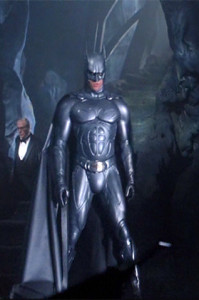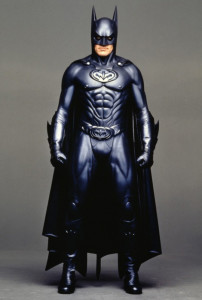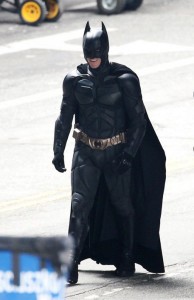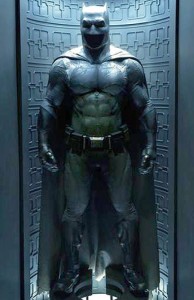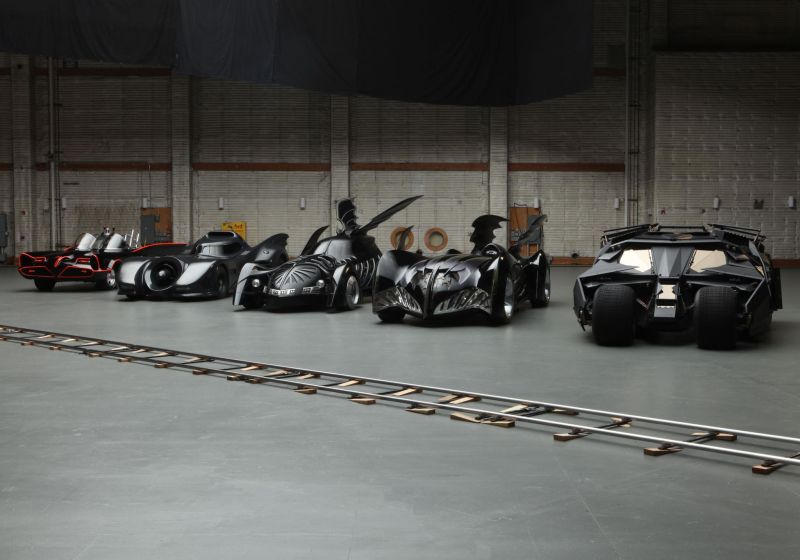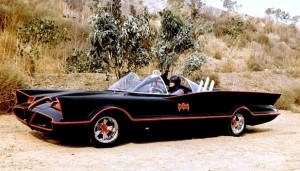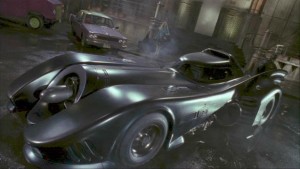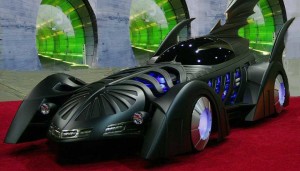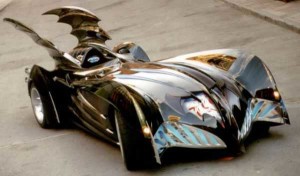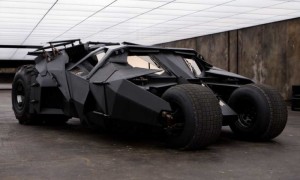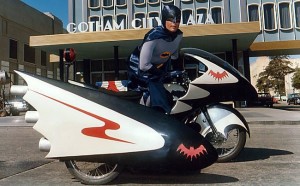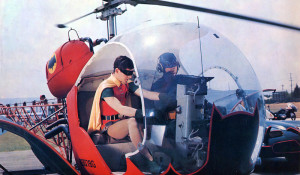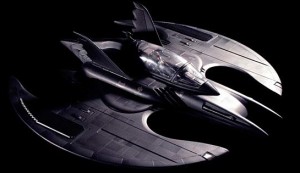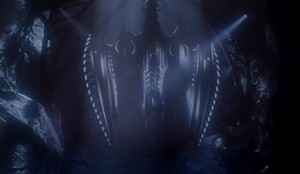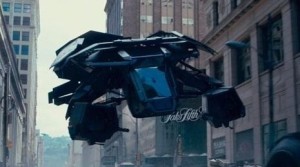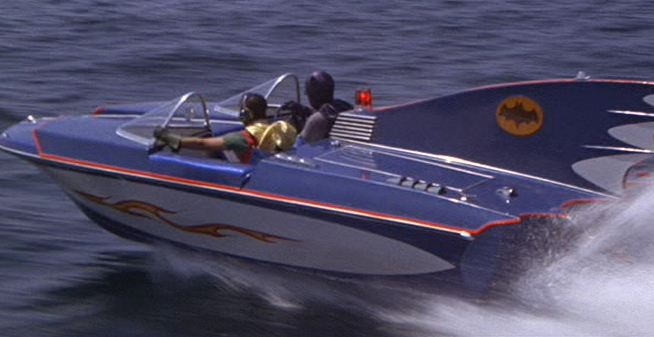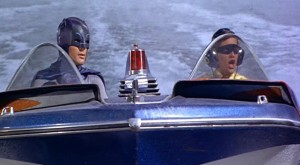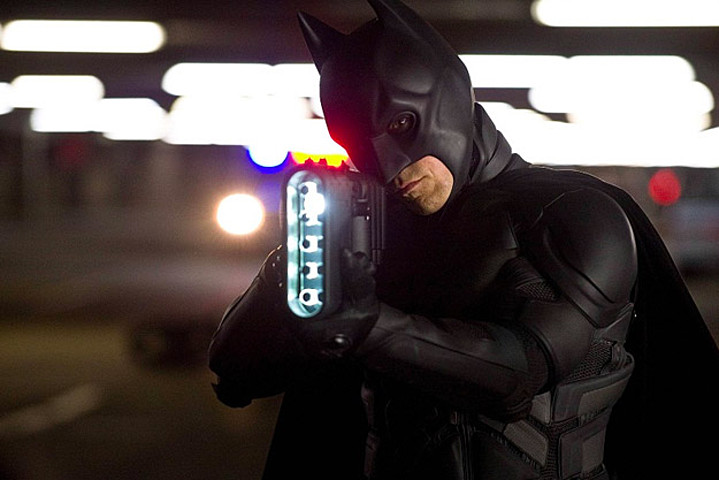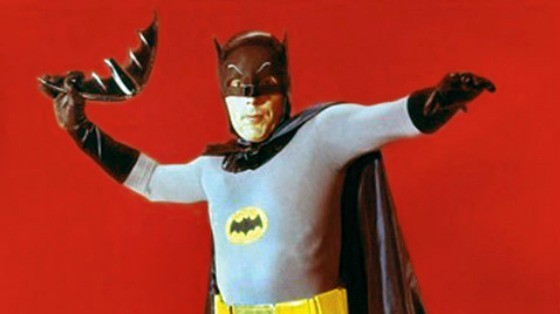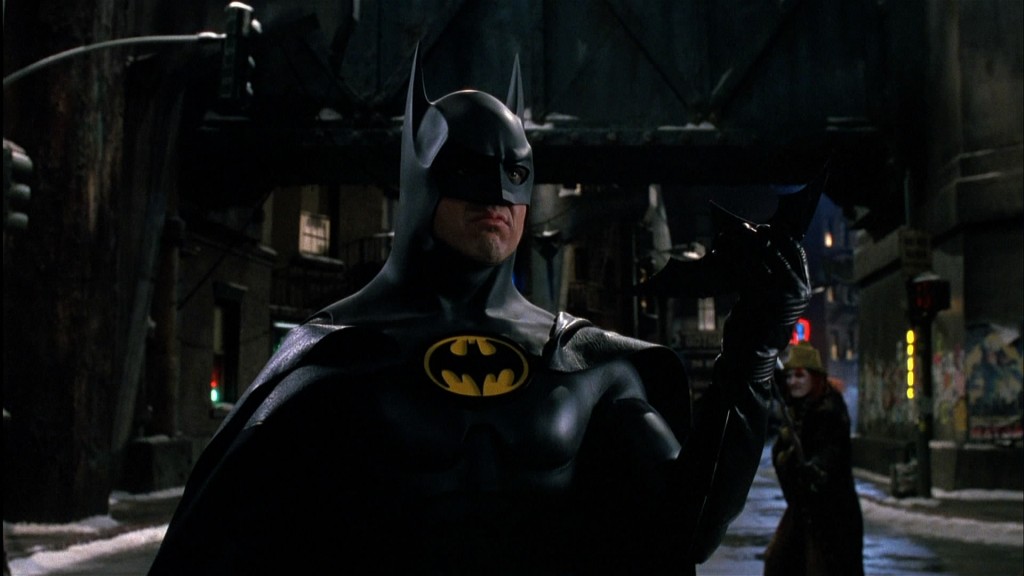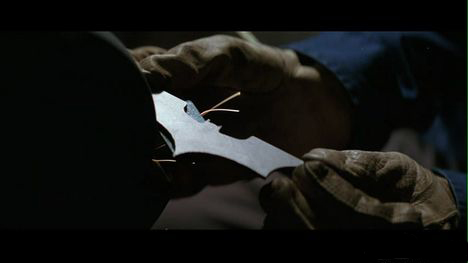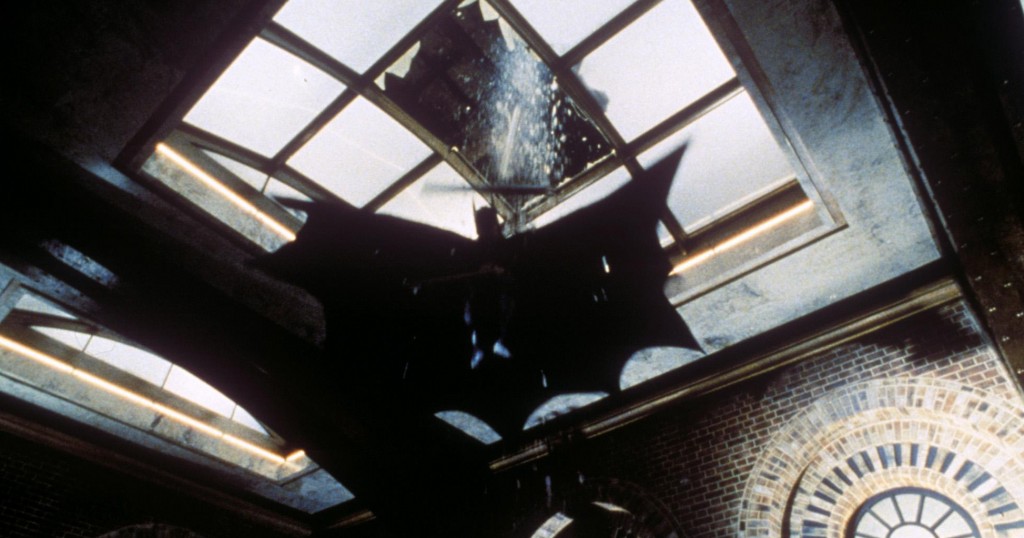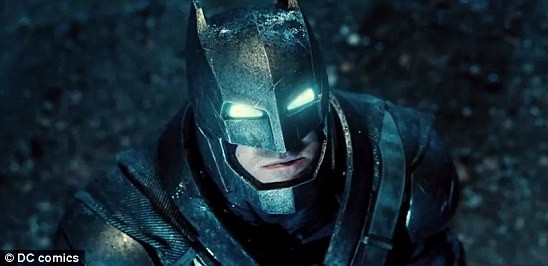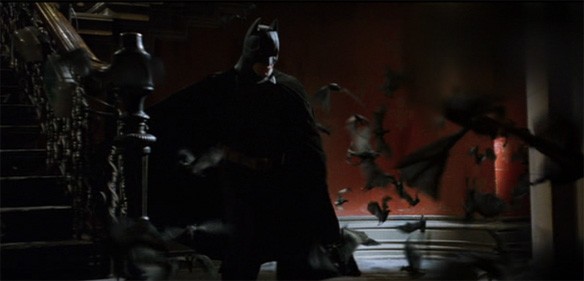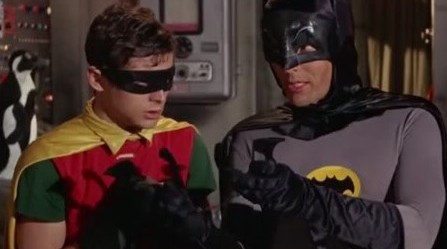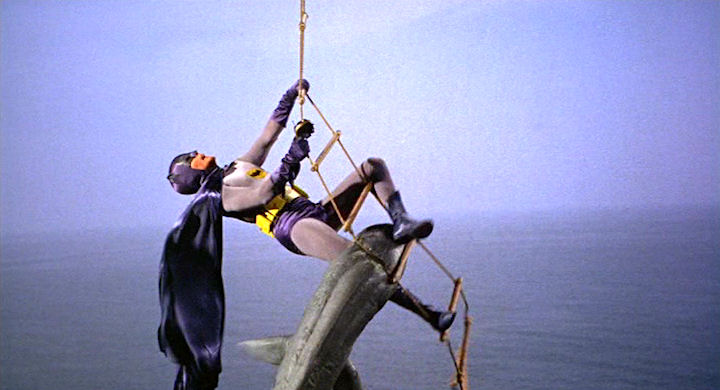Happy Batman Day! (September 16th, for those who may not know). We are happy to announce that The Batman Part 2 (Robert Pattinson, James Gunn) is under development for release on October 3, 2025, and for a man pushing 85, Batman doesn’t appear to have aged one bit. But from the standpoint of his character, suit, vehicles, and gadgets… he has come a very long way from the comic book caped-crusader that Bob Kane and Bill Finger introduced to the world in 1939.
The announcement of Part 2 of The Batman (2022) has us thinking about the entire evolution of the man from his humble beginnings. So we contacted our resident expert, Erich Appelhans, and asked him to fill us in with every detail from the campy performance of Adam West to the origins of the ‘Bararang,’ which Erich predictably suggests could be making a surprise appearance in the upcoming Part 2. But with over 80 years to cover, where should we begin? Ah yes, why not with the man himself?
The Actors
There have been many actors who have portrayed Batman on television and film. They each brought their own interpretations as well as those of the writers and directors to the screen. Batman portrayed by each of these actors was influenced in some way by the comics of the time.
Adam West
He played the Batman on the television show from 1966-1968. Mr. West’s time in the suit was very memorable. His take on the character was a silly portrait of a middle-aged man in an un-intimidating costume with oversized props and gadgets. Granted technology was very different in the sixties, but there is no excuse for things like the “Bat Shark Repellent Spray” in a large aerosol can the size of my arm. As for his portrayal, it was a very energetic but monotonous performance. From running and jumping around on the sets to dancing the “Bat-Tusi” with a sexy villainess, he displayed a level of activity and enthusiasm little seen on television in that time. However, he remained the same persona in both the Bruce Wayne and Batman guises; namely Adam West. Maybe that was by comical design, I don’t know. His time as the Caped Crusader did seem to inspire another actor who portrayed Batman. Even a director wanted to capture the mystique of that series. However, to poorer results. In all, one must give credit to Mr. West for blazing the trail and inspiring a future generation of Bat-fans to create their own interpretations of this character. Mr. West can be currently seen in Family Guy, voicing, of all people, Mayor Adam West.
Michael Keaton
He began a new era of the Dark Knight. From 1989-1992, he was the epitome of the Batman. A dark brooding figure roaming the night alone, he portrayed a very different character than that of the sixties. As Batman, Keaton was an unexpected choice due to his earlier work. Known mainly for comedic roles such as Mr. Mom and Gung-Ho, many people thought it was a huge miscasting. When it came down to it, Keaton proved he was up to the task. He was grim, monotone, and stiff. The latter term was due to the costume itself not being as flexible as the one in the sixties. He exuded the haunting darkness that was consuming the character. As Bruce Wayne, he injected a bit of a goofy, distracted act to distinguish the two personas, which worked well. Since his work at night as the Batman would always be on his mind. In fact, Bruce is the mask and he has to work hard to maintain the playful, billionaire bachelor. Through two movies as Batman, his performance inspired a generation and made Batman hip and cool once again.
Val Kilmer
He was brought in after Keaton bowed out of the series. And so, in 1995 he donned the bat-suit and became The Batman. His one-time portrayal of the Dark Knight was a one-note act. He was going for a grim and serious character, which he pulled off with reasonable belief while in costume, but one would have to ignore the cheesy lines that were given to Batman. One can see Mr. Kilmer was trying his best to work with a shoddy script and a crappy director. Crappy may not be the best word, but a better term may be a director who just didn’t understand the source material. As Bruce Wayne, Mr. Kilmer carries over that same grim tone. He makes no effort to change or differentiate the two personas. Yes, there is a goofy scene in Chase’s office where there is an awkward exchange over the door during which he fumbles over his words like a Twitter-pated child. However, that is the only time you see this side of the character. It is sad in a way, because, like Keaton, Kilmer was known primarily for his roles in comedies. Movies such as Top Secret and Real Genius were goofy, but good comedies. He showed much promise in that way and is very similar to Keaton in their style of comedy. Above all, his turn in the Batsuit was fair and passable.
George Clooney
In 1997, the part was up for grabs and I think the producers were desperately looking for anyone who could fit inside the suit. In what seemed like a revolving door on the part in which everyone whose anyone tried on the suit, the first actor who was available apparently was George Clooney. Coming from such illustrious projects as Return of the Killer Tomatoes, and From Dusk Till Dawn, he had all the experience the producers were looking for. Inheriting the cape and cowl from Val Kilmer, George Clooney took his turn as Batman. As the billionaire playboy, he was decent, bringing good looks and charm or charisma to the part. As Batman, he was the weakest. Maybe it was the story, or maybe it was the corny lines and silly props given to him that detracted from the performance. Can anyone say, “Bat credit card!” I do know the campy direction of the production did not help anyone’s performance. In fact, it basically killed off the franchise, or to be more precise, that series. But, I digress. Clooney’s turn in the role was uninspired. There was no attempt to inject some life into the part. It was as if he were sleepwalking through the sets. In short, he was Clooney. But if one is concerned about Clooney being “Clooney” in future roles, one should only be half concerned. Mister Clooney has developed some acting skills over the years. He does still manage to inject “himself” into his roles at times.
Christian Bale
For a while, it seemed the Batman franchise had been killed off. In 2005, a new Batman movie was announced and a new actor was to don the suit. A slightly unexpected surprise came in the form of Christian Bale in the role of the Dark Knight. Known for such movies as American Psycho and Equilibrium, the world seemed split down the middle as to what he might bring to the role, especially with the bad taste that was left in the fans’ mouths after the disaster that was the last movie. In a darker, grittier version of the story, Christian Bale grasped the character and turned it inward. Over the span of three movies from 2005 to 2012, he displayed the tortured soul that is Bruce Wayne. In what little time we saw him in the Bat-suit, he brought the same raw intensity to that persona. As the Dark Knight, we saw the drive and focus displayed as never before. He gave the audience the grim, determined Dark Knight who wanted to bring justice to the grimy, crime-infested city known as Gotham. While in the suit, Christian Bale added an extra something to the disguise. Whether it be good or ill, much like Keaton, he changed his voice lowering it when in the Bat-suit. In addition, he added a gravel sound to his voice. It differentiated the two characters that much more. It is a very distinct and memorable addition to the Batman persona. It brought the character into a more realistic realm because that world brought about the need for him to develop that voice. In all, Christian Bale gave a great performance in an all-around great series. Christian Bale has proven he can take on the Dark Knight and other roles as well. One of his current projects is Exodus: Gods and Kings.
Ben Affleck
The next actor to take on the role of the Dark Knight is Ben Affleck. With such award-winning performances in movies like Daredevil, Chasing Amy, and the Razzie Award-winning Gili, it seemed like the producers had taken a wrong turn. With the disaster that was Daredevil, one would think that his career would have been over. However, in seeing some of his more recent films like Runner, Runner, and Gone Girl, it seems he has learned a thing or two from his mistakes. In those two roles, he has displayed an intensity that would fight with the Batman persona. I saw a bit of a darkness that if harnessed and channeled correctly, could have made him into a great Batman. Buy Atlas, he will at least always be considered as ‘passable’.
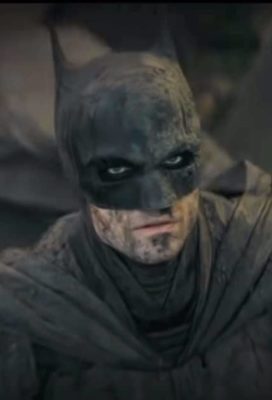
Robert Pattinson
We’ve always wanted to see the playout of an overly (“bothered“) Batman, and now with Robert Pattinson onboard with the modern series, we will finally have the chance. But seriously, we’re going to give the guy a chance, as he might have the makings to grapple toward the heights of such predecessors as Bale and Keaton. Who knows? But we’ll wait patiently, as the next two years will surely tell all.
All of these actors have contributed something to the growing legend of Batman. However, there is one man who has helped shape the myth for the last 23 years. Kevin Conroy has portrayed the Batman since 1992 in various animated forms. He has given his voice to the character since Batman: The Animated Series premiered in the autumn of 1992. He continued with the character in the spin-off series Batman Beyond as well as in the two Justice League series. He has played Batman in four movies based on the animated series. Movies like Justice League: Doom and various video games including the Batman Arkham series have recruited him to be the voice of the Dark Knight. It is no wonder as to why it is because he has such a distinct voice as Batman. It has a very deep and intimidating tone. When he takes off the mask and is Bruce Wayne, his voice goes up to a higher, playful tone that is almost childish sounding. Taking a cue from Keaton, he was the second person to do this sort of thing. Being a voice actor, though gave him the experience to make it sound like two distinct actors were playing these characters. He may continue portraying the Dark Knight in the future, beyond the current project which is Batman: Arkham Knight. It is the conclusion of the Batman Arkham video game series.
While certain people may prefer one actor over another, they have all brought the character to life, both on the silver screen and the small screen. As these and other actors continue to portray the Batman, he will endure and inspire future generations.
The Bat-Suits
They say the clothes make the man, but in reference to Batman – his fashion statement not only told the story of his roots but also made one of the biggest impressions on fans.
1966 – 1968
In 1966 to 1968, Adam West donned “the suit” to bring this character to life. This suit was a product of the time. It was designed from the comics where every “superhero” wore tights. As such, Adam West’s suit was made with blue and gray tights. The cape and cowl were made of shiny blue satin and offered no protection from criminals’ punches, or a baseball bat to the head. In later years, the cowl was of thick rubber or ceramic plating. The ears on the cowl were non-existent. The cape was so short that it might as well not be worn. The boots rose to just below mid-calf. On one hand, this suit was the most practical to wear. But, it was the most comical in appearance. Especially when white eyebrows were drawn on the mask. The utility belt was massive and yellow. The many pouches that adorned the belt looked like they could carry everything, including the kitchen sink. During that era, Batman packed nearly anything and everything.
1989
Many years later, Michael Keaton dusted off the suit and revived the character. In fact, many changes were made to the Bat-suit, namely the color scheme. This was a midnight black body suit with rubber-like armor plating on the torso which absorbed the bullets fired at him. Thick metal plates adorned the shins of the knee-high boots, as well as on the gauntlet-type gloves. A rubber cowl with tall, pointed ears rested on the shoulders. The long ears resembled the horns of a demon of the night. The long, black scalloped cape draped over the shoulders and down to the ankles added a mysterious air to the suit. When this cape is extended out to form the “wings” of the bat, it is a very frightening sight. These variations increased the terror-inducing element Batman had. The face of the cowl had an extremely chiseled appearance. A stylized bat over a yellow, oval background was positioned high on the chest. This symbol was small, being no bigger than a hand. The suit was a fresh take and a different direction from the preposterous portrait of the previous era.
1995
In 1995, Val Kilmer stepped into the suit to try to fill the vast void left by Keaton. The suit is roughly the same as above throughout most of the movie. It was a black-and-yellow color scheme with slight alterations. Only the thin belt was yellow and muted to more of a copper color. The suit changed during the climactic fight. The ears are more defined with vents in front and down the side. This change gave the suit a more mechanical look. The cape is still long and black. The suit changed colors from midnight black to a blue-gray mix. The bat emblem is just the stylized bat embossed and stretched across the chest. There is no yellow background. The bat is the same color as the rest of the suit. This suit, while neat looking, fails. The general purpose of the suit is to protect Batman, not only his identity but physically. It is, also, supposed to project a certain image of fear on the criminals he is hunting. As high-tech and robotic as this looks, it could strike fear in certain people, but it misses the point. Batman is supposed to be a living shadow lurking in the darkness. He springs out briefly, like a demon with huge horns ready to impale the common criminal then melts back into the night like a phantom. If the designers had stayed with the established scheme, like the one shown at the beginning of this third film, they would have succeeded in making a good Bat-suit.
1997
George Clooney came along in 1997 to try on the suit. The bat emblem is stretched across the chest and is thinner. It is a muted silver that could possibly act as some kind of camouflage. In that same scheme, the belt is also silver with a black bat emblem on the buckle. There are various other silver highlights on this outfit that should not be there, namely one outlining the large ears and the “vents” in them. It kind of defeats the idea of stealth, I would think. Or maybe the idea was to blind the bad guys by reflecting light off all the metal into their eyes. This suit is an epic fail if ever I have seen one. The only redeeming thing this has is the long ears. Aside from that, Clooney could have put on the suit Adam West wore and looked better.
2005
Christian Bale embraced the shadows and assumed the title of The Dark Knight. This suit was designed to be the most realistic of them all. It used Batman’s theme of being a modern-day knight in armor and brought it to life. It begins with a matte black cape and cowl that in some lighting looks to be slightly faded to dark gray. The cape is not just cloth, but perhaps some thin, leather-like substance that has some weight to it. The cowl is reinforced with a molded ceramic material. The ears are shorter than the previous suits. They are wider, both in profile and face forward resembling ears that are found in nature rather than the spikey horns of the suits from the eighties and nineties.
The suit is a set of layers. One layer is made up almost entirely of gunmetal gray titanium armor plating. It rests on a Kevlar weave body suit that looks like modern-day chain mail. The cape, in this version, was made of a mimetic polymer that stiffened with the flick of a finger. Thus, he can shape the cape into what appears to be bat wings when the need arises. The belt is a muted copper color and thinner than the Keaton version. It is the only thing that stands out in color on this suit. The symbol of the bat on this suit is a more traditional-looking bat centered on the chest, stretching most of the way across. There is no yellow background making it a bulls-eye on his chest. It is raised, or embossed, on the chest piece. It is the same color as the chest piece, namely matte black, or a gunmetal black making it blend in with the surrounding suit. This is the theme of Batman; he uses the suit to help him blend in with the shadows. In sum, it looks like a modern-day version of the medieval suit of armor. While being different than previous suits, this outfit slightly resembles the black and gray suit seen in the comics of the early fifties and occasionally in the mid-eighties and nineties. This one still offers the same terror-inducing image that Batman, himself, should project.
2016
Ben Affleck will be the next one taking up the mantle of the bat. From the picture I’ve seen, the suit looks pretty good. If the designers keep it the way it appears to be in the photograph, it could be a classic. The base suit looks to be molded rubber in a dark gray color. A giant bat is emblazoned on the chest stretching from one side to the other covering the chest like a shield. It is in a slightly darker color than the suit. There seems to be no metal armor plating as they are going for a skin-tight look. The cape and cowl are the same color as the bat being a matte black or a very dark gray. The cowl is leaner and the ears are very short, but not as short as in the sixties when they were almost non-existent. The suit looks good, in that it is based on the one worn by Batman in the graphic novel, The Dark Knight Returns. With Ben Affleck in the suit, it has been one of the better-designed ones.
The Bat-suit has been designed and redesigned with various looks and for many different purposes. Some were assembled to mimic the comics of old. Some designs reflected a need for stealth, while other suits were built with urban combat in mind, i.e. Christian Bale’s suit. Of all the different designs of the Bat-suit, one thing remains the same–the suit protects him, by protecting his identity.
Since Batman is just a man in a suit, he needs ways to get around quickly. Hence, he must rely on machines of various kinds to transport him – and this is where things start to get a little more interesting.
Bat Vehicles
Batman’s vehicles are adapted to (or specialized for) different modes of travel: land, air, and water. Over the years, there have been many designs and variations of these vehicles. They have all served the same function and the basic designations of these vehicles have remained throughout the years.
Batman has two main forms of ground transport. They are the Batmobile and the Batcycle. The Batmobile is his main mode of travel. It provides swift ground transport, constant communication to the cave, protection from larger weapons, and is equipped with heavier firepower when needed. Essentially, it is a sleek tank.
Ford Thunderbird
In the 1960’s, the Batmobile was a reflection of the time. Made from a Ford Thunderbird, this car was painted black with red detailing that accentuated the curves. A jet engine powered the car propelling its passengers to the crime scene in no time at all. Two low fins sprouted from the door. They ran the length of the top of the body to the trunk. Continuing with the aircraft theme, two airplane canopies were laid out in front of and in the rear of the seating area. They were open full-time like a convertible. A center arch divided them and held a rotating emergency light. In this era, Batman is a deputized agent of the law and so his vehicle carries a police light and siren. As silly as it looked, this car had everything the writers of the show could think of to pack into this car. It had a telephone and a television so Batman could communicate with Alfred or Commissioner Gordon. Technology-wise that was almost unimaginable for the time. Taking this in with the classic styling of the car, it is a nice vehicle overall.
Keaton-Mobile
In 1989, Batman was taken out of storage, dusted off, and thrown up on the screen. After long a hiatus in dark storage, a new and very different Batman emerged. And his vehicles reflected this. The new Batmobile was a darker image than the one before. A nice combination of looks and performance, this sleek car packed a punch. With the jet engine taking up much of the long hood this vehicle moved like lightning. With the wide cockpit situated in the rear and twin fins over the rear wheels, this car was mysterious and intimidating. With the two machine guns that popped up from the fenders, this car was lethal. Draped in that black pearl paint, one can see why this beauty was a beast when unleashed.
Batman Forever
During the Kilmer era, Batman received a new car. Helping Batman patrol the streets in the third movie, this vehicle was an interesting concept…for a science fiction movie. Looking like a glowing cocoon on wheels, one would wonder if this was Batman’s car or did he borrow it from Butterfly-Man. To be fair, there was a large fin in the back that sort of resembled a bat wing. The bat symbol was on each of the wheels which were lit up like spotlights apparently so the criminals could see him coming from miles away and high-tail it out of there. Batman is about stealth and deception. His car should reflect that. It should be a rolling shadow, not a neon bar sign. Thankfully, this car was destroyed in the movie and the concept never resurfaced.
Clooney-Mobile
1997 came and it was another Bat movie, another Batmobile. The Batmobile of this era resembled the one Keaton drove. It had a long hood and twin fins. The cockpit was set back in the rear. However, the cockpit was narrower, sitting only one person. It was also missing the roof. Yes, Batman was tooling around in a convertible! If that wasn’t enough, the twin fins I mentioned earlier were super huge. It was as if the designers were trying to merge the Batmobile with an airplane. There is no front air intake. Instead, the front of the car curves down into what appears to be the styling of an average sports car. There is a window in the nose that reveals a spinning orange and red-lighted contraption. The wheels, unfortunately, are still lit up like Christmas trees, thus negating any chance of driving close to a possible crime scene and catching criminals in the act. Wrapped in black paint, this machine is a slight improvement over the roving cocoon that was the previous model. This is not saying much since this was the best thing to come out of that movie. Well, maybe seeing Alicia Silverstone in the Batgirl suit might be one notch above this.
Tumbler
With the revitalization of the Batman property, the Dark Knight received a new car. This was a new era and a new concept. This time following the theme of a darker, grittier Batman, this Batmobile held true. Fashioned from a military concept vehicle that Lucius Fox designed, this thing is a jet-powered tank. Not as beautiful as some of the other Batmobiles, but with a nice coat of black paint masking some of the jagged edges and overall box-like appearance, it fits right in with the new Batman’s arsenal. This thing had missiles, machine guns, and a small, mortar cannon in the rear. The large tires and all-terrain suspension system ensured that this car could go anywhere it so chose to. As far as rugged practicality goes, this is the best Batmobile, yet.
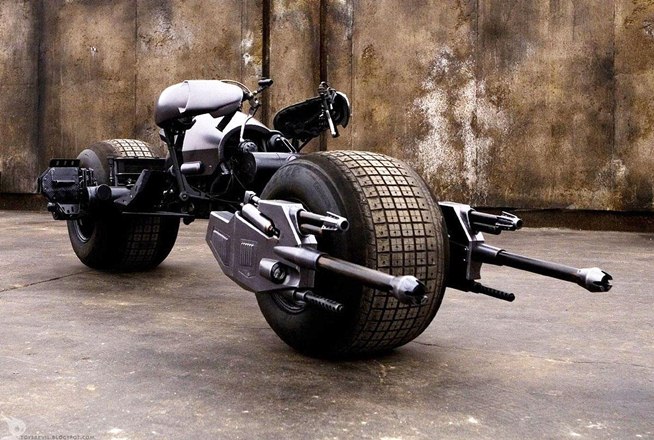
The Batman does have another means of ground transport. It is the Batcycle. He uses this when the Batmobile is down for repairs or is permanently out of service, or when the need arises. It is not necessarily quicker, but it is smaller and more maneuverable. Thus, he is able to get out of tighter situations.
Batcycle
The 1960’s era saw this used sparingly. This vehicle was fashioned after the World War 2 motorcycles. It had a cycle with an egg-shaped sidecar. It was painted in a red and black scheme the same as the other vehicles. The neat thing about this one is the sidecar could eject and become another vehicle. With the two vehicles attacking from opposite sides, the villains didn’t stand a chance against Batman. One would ask why use this at all when Batman has the Batmobile. Aside from the answer provided above, that is the express reason why it was not seen until the retooling of the Batman series into the grittier Dark Knight series. In this vision of the Batman, the Batcycle concept was dusted off and given new life and a new name. The Batpod was introduced as a very utilitarian form of a batcycle. It was very Spartan in that it had two large wheels, a small engine, and two large caliber guns. It was conceived in 2008 as an escape pod from the Batmobile. The wheels that were on the Batpod were the front wheels of the Batmobile. This very quick and very agile vehicle served its purpose in helping Batman fight crime plaguing the city.
For jobs that require flight, Batman has a vehicle or two for that purpose. In the comics, he has three different types and in the movies, there are two. These aircraft provide Batman faster more direct travel to destinations over longer distances. They provide air support and carry heavier firepower than the Batmobile. These vehicles are known as the Batwing and the Batcopter.
In the 60’s, there was no airplane used. Instead, the Batcopter was employed as the main mode of air travel. This was just shown as a helicopter with some small bat wings attached for looks. There were no special features about the design. No weapons or any gadgets are hidden in it. The craft was a mostly bare-bones, basic helicopter with a bubble-type cockpit. This design was slightly cheesy, even for the budget of the show. The design needed more thought, and more customization to make it feel like it was part of Batman’s line of vehicles. Just slapping some bat wings on the thing was saying Batman couldn’t afford any more vehicles, or at least had to stay within a budget. Batman was supposed to be one of the richest men in the world. He could afford it! Batman flew this once in a while, but he mainly used the Batmobile.
Batwing
With the new interest in Batman in the eighties, Batman received a new aircraft. It was called the Batwing. Robed entirely in a black paint scheme, this small, one-man jet soared through the skies. Molded to the shape of the stylized bat in the logo, this aircraft is an elegant sight to behold. Both poetically aesthetic and practically effective, this thing had it all. This fighter carried twin cannons and four rocket launchers perfectly balanced on each side; a bit more firepower than the Batmobile. It was a winged avenger for this dark crusader. In all, it was a simple design that worked well for this era.
Batman Forever Batwing
Sticking with the Batwing theme, the next Batman flew the replacement plane for the last one in this connected series. It was utilized in the last part of the story. Looking like the top part of a trident, it was an interesting design with the forward swept wings. However, it was very “spikey” and not very bat-like. It was very aerodynamic. And it did give off an air of high-technology; something Batman is synonymous with. It looked more like the pincers of an insect, like a beetle. While that would be great if the movie was about the Blue Beetle; however, like his name states he is “Batman.” This was another misfire on the production side. This was the last of the air vehicles that Batman had used for over ten years.
The Bat
In 2012, the concept of the plane and the copter were combined to form a hybrid vehicle with the advantages of both and referenced simply as “The Bat.” This had all of the weapons types found on the Batmobile and more. This is the ultimate weapon in Batman’s arsenal in that it can travel long distances at greater speed. It can hover and can carry more firepower than the Batmobile. It looked like the Batmobile had mutated and grown larger. Sprouting “arms” which were the weapons platforms and an elongated rear, it was a strange site to see. This rear section was where the large rotor was housed and was shielded from debris and other such things. This cowling served to quiet the blade of the rotor to a near whisper. It was a well-designed craft that suited the darker theme of this series of movies. The chiseled skin of the craft gave it a rugged look while the matte black coat of paint softened the appearance somewhat. It was a nice balance between a gritty ruggedness and sleek, sexiness.
Of course, there remains one more mode of transportation, though it is used less frequently than the other two modes previously discussed. It is water transportation. Batman’s vehicle of choice is the Batboat. This watercraft allows him to travel by water, whether it be surface or subsurface.
Original Batboat
In the 1960’s era, the Batboat was simply a regular motorboat painted red on the body and purple and black on the top part. A large fin was fixed to the back of the boat and stood straight up in the air. The boat looked similar to the Batmobile of the era where the passengers sat. Two plane-style canopies were placed side by side like the Batmobile. Batman mainly used this to travel to islands and other areas that have water access where a plane would be too visible. This was, as far as I could tell, just a basic boat. No gadgets were used, but that doesn’t mean there were none installed. It was a nice-looking boat and even to this day it retains it beauty.
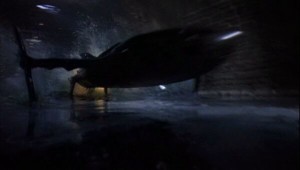
Batskiboat
As with the other vehicles in Batman’s garage, this boat received a redesign for the nineties. This is one of the more interesting and unique vehicles that Batman has used from his vast array, The Batskiboat stormed onto the scene in the second of the Keaton-led Batman movies. It is a hydrofoil in the shape of a torpedo with small wings. Powered, of course, by a jet engine this single-occupant vehicle zooms across the water faster than anything on the water. It has twin torpedo launchers for anything that gets in its way. Dressed in a matte black finish, this thing is a shadow on the water; a shark ready to strike. A beautiful design to match all of the other vehicles of this era; it is both sleek and stylish and combat-ready when needed.
Kilmer Batboat
1995 saw another replacement for the previous aquatic machine. This time the look and feel were a bit plain. Harking back to the Batboat of the sixties, this one was a speed boat wrapped in a black coat of paint, but with the same glowing design as the new Batmobile. It had a longer chassis than the sixties and a larger fin down the center. Unlike the sixties design, this one was enclosed allowing it to submerge. This allowed Batman access to all aspects of the marine world. Still, the blue glow along the bow made it look like a glow worm swallowed a missile. It is not exactly stealthy. This is another misfire for this go around. This was the last of the water vehicles shown in the Batman movies to date.
There was a strange ice sled-type machine in the fourth movie where Batman pilots over the ice-covered streets of Gotham. This was a rather large contraption that looked somewhat similar to the Batskiboat. Only this time there was no canopy over the cockpit. The body was wider and it had wings extended and curved downward. The ends of these wings had long ice blades resembling what one would find on ice skates. It looked odd and made one think, “Why would Batman need such a cumbersome and highly specialized thing when the Batmobile could have easily been adapted to these conditions?” In truth, it was to sell more toys. However, on a different line of thinking, it was to give Batman one more vehicle in his vast storehouse of such things and to show off the impressive wealth he commands.
These are the primary mechanisms Batman uses, and depending on which comic book, or television show, one might see other more minor things. In Batman Returns, he used a hang glider. That is sometimes referred to as the Batwing or Bat Glider. It depends on which show, or comic one is viewing. One thing is clear, whether it is on the ground, in the air, or on the water, there is no place Batman cannot go.
Bat Gadgets
Batman has an arsenal of gadgets and devices, stored in the Batcave. These tools aid him in his war on crime. Before he ventures out, he selects the ones that he might need, putting them on the belt he wears, or sometimes in the Batmobile. There are certain gadgets that he uses frequently and there are some that he uses rarely. The rarely used items tend to be the silly solutions to the more ridiculous problems. Over the years, the size and the appearance of the gadgets have changed but the basic functions and designations remain the same.
The most frequently used is the Batarang. This item is thrown manually and is used primarily to disarm opponents. In the comics, the Batarang has taken on various modifications over the years. Some of the variations are: exploding Batarang, magnet Batarang, and even a police whistle Batarang, to name a few of the 100 versions of this tool. Batman has used this device quite extensively and has modified it to suit his needs. These modifications were mainly seen in the late fifties and sixties, specifically in Detective Comics #244.
1960’s Batarang
In the 1960s, it was a standard boomerang painted blue and gray with the bat symbol of that time period emblazoned on it near the apex. It was supposedly carried on the belt in one of the back pockets. However, it was rather large and clunky to actually fit. More often than not, Batman reached behind his cape and pulled out the Batarang like a magician pulling a rabbit out of a hat. This was not really used as a weapon in this era. Instead, Batman used it as a grappling hook or to flip switches.
1980’s Batarang
In the 1989 movie, the Batarang changed its appearance. It was a black, metal piece that had been folded in half. When a button was pressed, it snapped open and looked more like a bat. It measured about six to seven inches wide when open. This was when we saw the Batarang begin to be used aggressively. Batman wielded the device to trip his opponents, disarm them, and even knock them out. The Batarang did receive a hi-tech upgrade in Batman Returns. Whether that was a good thing or not, remains to be seen. It was the Homing Batarang. Batman programmed the targets into the device and tossed it. The Batarang began to seek out its targets like a cruise missile. This is the scene where we see Batman taking on a group of thugs with this device and he knocks them out one by one with this flying contraption. It was an interesting scene and it was comical in an otherwise dark movie.
Dark Knight Batarang
In a grittier era of the Dark Knight series, we see many changes made to the Dark Knight and his gadgets; primarily, to the Batarang. This was now a small metal shuriken about the length of a finger. They could now be easily carried on the utility belt. They were shaped in the form of the new logo. The edges were filed down so they were very sharp. Batman used these with good effect as he sometimes threw two or three of them ninja-style at the enemy. It made sense after all, since all of his training under different masters and various vocations essentially culminated in creating a modern-day ninja.
Batman’s Guns
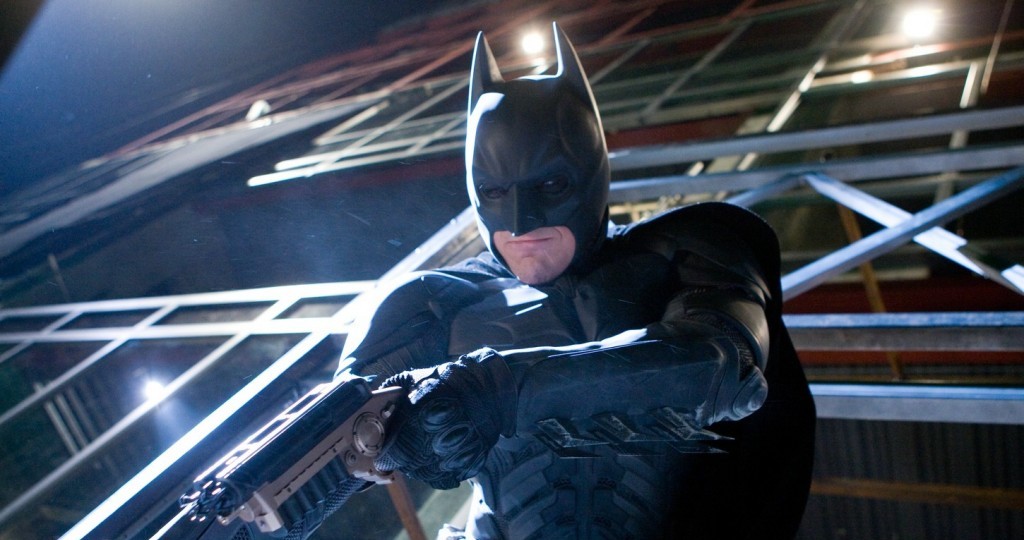
Grapnel Gun
The Grapnel Gun is probably the next most used gadget in Batman’s arsenal. It provides him with quick travel over short distances. It shoots a rope by which Batman swings over the distance. If shot upward, it will pull him up, causing him to rapidly ascend to the top of a building. Likewise, it can help him descend quickly by reversing the motor to let out the cable at a fast, but controlled pace.
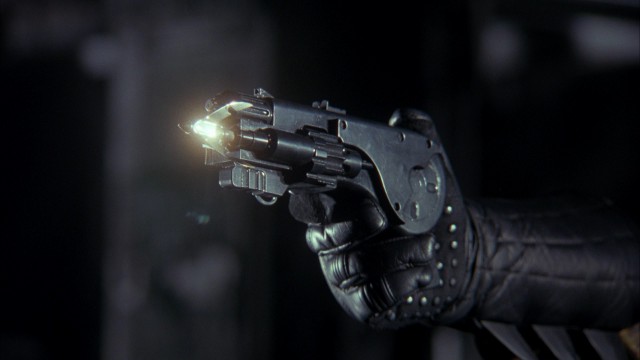
In the 1960’s, there was no concept of this. Instead, Batman attached a cable to the Batarang and threw it so that it anchored. With the line secured, he was able to swing across gaps, or more often, climb buildings. He would “walk” up the side of a building having conversations with Robin behind him. The concept worked and Batman arrived at the places he needed to go, albeit more slowly.
In 1989, this device was introduced and was heavily employed in the Keaton era. He used this to mainly escape from danger, but there was one scene where he descends from above and gets the drop on the criminals. This device is quickly assembled on the belt by taking a black box that contains the hook and filament and snapping that onto the base. The base is the gun part of the mechanism. Fully assembled, the gun is about nine inches in length which is pretty portable. The filament is a thin and very strong cable that is also light-weight. The gun seems to operate on a compressed air system, like a BB gun, so it has many “rounds” of operation.
In the years following Keaton’s time as Batman, this device continued to be employed and the design remained similar. Though it was surprising, considering when Kilmer took over, everything else was re-designed.
The year 2005 saw a new Batman emerge and some redesigns on the gadgets. This era’s grapnel gun was like a small shotgun. A large circular part, presumably housing the spool of cable was the center of the device. A handle with a trigger and the barrel were attached to this at a 120-degree angle. It was black like most of his tools. This Batman used this device quite frequently when he was out at night. He even used this to interrogate a suspect by hanging him upside-down dropping him and raising him repeatedly.
Zip Line Gun
The Zip Line Gun is another key tool Batman uses in certain situations. This is meant to speed Batman horizontally from one elevation to a slightly lower elevation.
Keaton used it in his first film (Batman 1989) to escape from the museum. It is similar in construction to the grapnel gun. However, this one had two barrels side by side. The barrels split apart 90 degrees horizontally. Batman raised it up above his head and fired it. The hooks, now facing opposite each other, launched out and secured themselves. Once the hooks were secure, the device pulled the lines taut and Batman slid down, away from danger. This was one example of how this device is used. Though it is not as handy as the grapnel gun, it is still employed from time to time.
Val Kilmer used this gadget in the movie Batman Forever. Though the deployment method is not seen it is implied he is using the zip line. One sees Batman soaring onto the scene like a bat out of the darkness. He suspended himself with a cable to the zip line cart and slid down onto the scene with arms out-stretched holding the cape spread like wings simulating flight. A nice use of the gadget, but considering he was arriving at the scene of a hostage situation to appear before Gordon, it was a bit too theatrical. It would have been more effective had it been used like that to pop in on the criminals. He could have swooped in, appearing to fly. The superstitious criminals would have seen this and believed he was a demon, thus enhancing the myth surrounding the Batman mystique.
Years later, in The Dark Knight, Batman used this to go from one high-rise to another. This device is a bit bigger in construction. It resembled a sniper rifle with a more traditional gun-like construction. Attaching the one end near him, he loaded the hook with the pulley and fired it. When it was secured, he tightened up the lines and attached a cart which he held onto. He slid across the enormous chasm that separated the two buildings and accomplished what he set out to do.
Smoke Screen
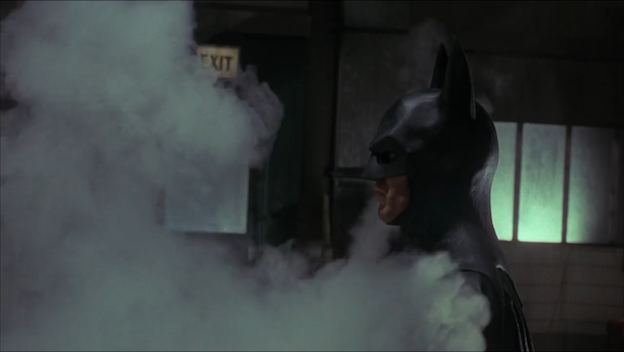
Another essential gadget Batman uses more frequently now than in the past is the smoke screen. This is packaged in a capsule or pellet. It is thrown down on the ground, and upon busting open, the contents react with the air to create a cloud of smoke. This smoke provides cover to escape from hostile forces. It could even be used to mask a surprise attack or act as a distraction. These are carried in a pouch on the utility belt.
Michael Keaton’s Batman used these with great effect. These were small capsules about the size of marbles. He needed only one to create a cloud of billowing, white smoke to hide his escape.
When 2005 rolled around, these became a staple in Batman’s arsenal. These were smaller and resembled the snap poppers that are popular to play with. Batman tossed three or four of these down on the ground and together they created the cloud that helped mask his movements.
Night Vision
On occasion, Batman employs night vision goggles in his work. He uses them sometimes to gain the upper hand. As the name implies, they help him see in the dark since he works mainly at night. In the movies, the night work began in the Keaton era. These goggles are usually built into the cowl, though once in a rare while, they are in the form of multi-function binoculars. This gadget is very practical and usually very handy.
In 1995, Batman used night vision to get the drop on the Riddler when he was in his hideout. These goggles used sonar technology. The lenses slide down from the brow of the cowl covering the eye holes. Using the projected sound waves given off by the suit, Batman was able to kill the main power, knocking out the lights and destroying the brain drain machine. It, also, doubled as a targeting scope! Shazam! Would you look at that?
This device was not used again until the 2008 movie in which Batman needed an edge against the Joker. This device was built into the cowl. In this version, little LED monitors slide down covering the eye holes. These displayed the visual data of the high-pitched frequencies given off by nearby electronic devices. Basically, it is echo-location, or sonar used in a slightly different fashion. This is a high-tech version of the way bats navigate at night. How fitting.
Bat Call
Another iconic, but little-used device is the Bat Call. No, it is not a cell phone in the shape of a bat. It is a small device that emits a high-pitched sound that only bats can hear and are attracted to. It is a very unassuming device that produces dramatic-looking results. Essentially, it provides cover for escape and a distraction from pursuit.
It was used in Batman Returns, perhaps for the first time on screen. The device looked similar to a garage door remote control. It was stored securely on the belt. When activated, it sent out a high-pitched sound that attracted nearby bats. They swarmed to the device and flew in a frenzied cloud until the device was shut off. As people ran away from or ducked for cover, Batman simply activated his glider and flew away from the scene.
The device was later employed in 2005’s Batman Begins. This time, it was a small, round device that was stored in the heel of Batman’s boot. It was black like all of his other tools and it was about the size of a silver dollar. Just like the previous time when this device was employed, the bats came swarming about. The bats were so numerous, and the swarm was so thick, that Batman was able to essentially walk out of the building unnoticed.
Bat Cuffs
The Bat-cuffs are another of Batman’s many gadgets. Their simple purpose is to hold criminals in place. When Batman incapacitates a criminal, he cuffs them to a poll so that the criminal will not escape. That criminal waits while the police are dispatched to retrieve him and speed him to jail. These are some of the sillier gadgets that Batman possesses. They are shaped like the bat symbol and are made of some kind of strong metal.
In the campy 1960’s television show, these silly gadgets were used occasionally. They were black, or dark purple. The wrist cuffs had some scalloping so that it resembled a short wing. There was a rather long, thin chain connecting the two cuffs. The chain seemed to be 6 to 8 inches long; way too much chain to be effective. These were carried in a front pouch on the belt. As a duly deputized officer of the law, it was fitting for Batman to be carrying these things. After all, he carried everything in that belt. Since Batman was a comedic caricature set up for a weekly laugh-fest, it was fitting for him to have such things.
1995 saw the re-emergence of these gadgets, though they were not used. They were displayed in one of the cases of small gadgets in the Batcave. These are silver metal that resembles a bat, of course. There are holes through the “wings” in which the wrists are placed. There is a hinge in the center body that allows the cuffs to fold together for better storage. I was surprised that these were not used with as corny as the story was. It seemed by the direction and tone of the movie, it was trying to pay tribute to the Adam West series. Batman could have been seen cuffing the Riddler at the end of the climactic fight saying some cheesy line like, “What has bars and sheets, but does not play music? A jail cell; which is where you are going.”
Bat Shark Repellent Spray
One of the more off-the-wall gadgets in Batman’s arsenal of crime-fighting tools is the Bat Shark Repellent Spray. It is as it states, a large can of aerosol spray labeled as such. It is used for those times when one is attacked by a shark. One simply sprays this at the shark and it flees. Or, if it has gotten a hold on the person, it will release its hold and swim away as seen in the 1966 movie with Adam West.
This is one example of some of the far-fetched items that Batman possesses. These types of tools were numerous and varied and could be seen in action in the comics of the sixties and early seventies. The animated Batman programs created during this time and well into the early eighties had Batman using things like this. It was a different and light-hearted take on this character. Thus proving the malleability of the character and showing Batman will endure.
It remains to be seen whether or not Robert Pattinson’s Batman will use any of these devices. In my opinion, he should at least use the Batarang which is Batman’s signature weapon. The appearance of the device will, more than likely, change to fit the visual style of the movie. New gadgets might be introduced. Batman has always been known for his gadgets or tools of the trade. One thing is certain, Batman will return and he will have at least one gadget because he is only half as effective without his gadgets.
Read More:
Femme Fatales of Batman
75 Years of Batman: 16 Greatest Batman Stories
12 Greatest Adversaries of Batman
About Erich Appelhans
Erich is the author of the thriller, Is Love Everlasting? He has a BA in Communications from Colorado State University. He lives in Arvada, Colorado with his cat, who always tries to help him with his writing. He enjoys watching movies, writing poetry, or reading a great book. Follow Erich on Facebook at http://www.facebook.com/erichswritingspot. Get his book at Smashwords: http://www.smashwords.com/books/view/410406
